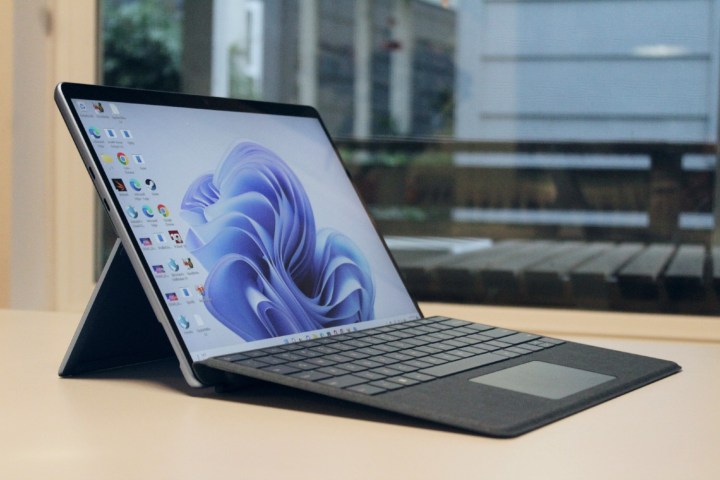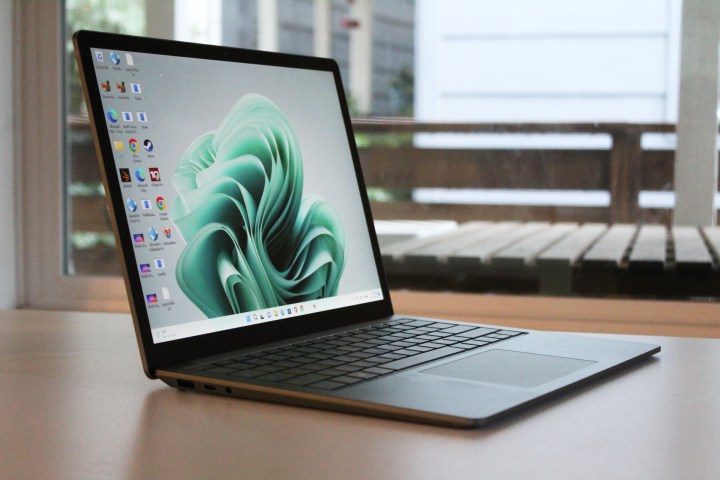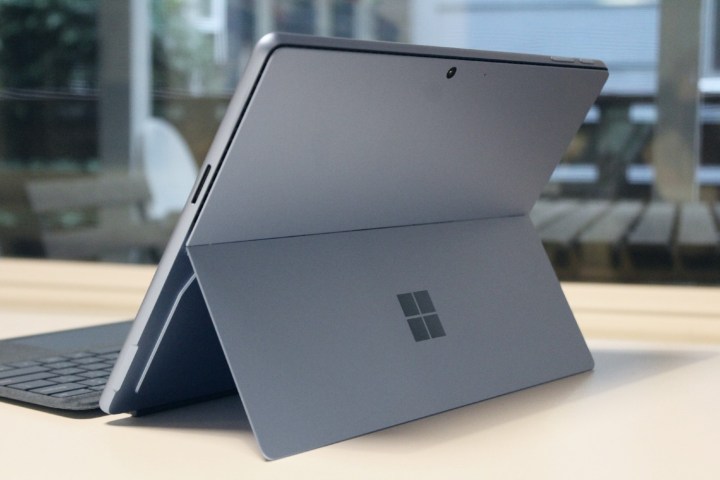We expect tech to get better with each generation. After all, what’s the point of releasing a new version of your product if it’s not better than the previous version?
It’s the question I had after reviewing the new Surface Pro 9 and Surface Laptop 5. There are plenty of good things about these new Surface devices, but there are a few ways they’re actually worse than their predecessors, the Surface Pro 8 and Surface Laptop 4. That’s not what you want in a launch of new products, especially when the competition continues to move forward.

Ports
The Surface Laptop 5 keeps the same ports as the previous versions of the laptop, and they’re good ones. USB-A, Thunderbolt 4, a 3.5mm headphone jack, and a Surface Connect dock.
The Surface Pro 9, though, is another story entirely. Most notably, the 3.5mm headphone jack has been removed entirely. The worst part? There’s no discernible reason for the removal. The chassis isn’t thinner. It wasn’t replaced with another port. There aren’t even any needed changes internally that we know of. Microsoft seems to have taken out the headphone jack just because it could. The Surface Pro 9 isn’t the first device to remove the headphone jack, of course. Dell removed it from the XPS 13 and XPS 13 Plus this year, and Asus has released ZenBooks in the past that weren’t afraid to drop the audio jack.

But in those cases, there were design reasons to remove it. Maybe these companies were headed in that direction already, but in the case of the XPS 13 Plus at least, Dell would have had to compromise part of its design vision to squeeze the port in.
That doesn’t seem to be true with the Surface Pro 9. I understand the argument for a portable device to rely primarily on wireless technology. But Microsoft really should have waited until a larger redesign was in the works because, as it stands, it feels like an unnecessary compromise that many buyers will feel annoyed by.
Performance
Performance is the most obvious area where we expect improvements year-over-year. Every year there are new chips, and we assume that they continue to get faster — even if it’s a marginal difference. We certainly don’t expect performance to go in the opposite direction.
But with both the Surface Laptop 5 and Surface Pro 9, there isn’t a clean forward movement in terms of performance. It’s a mixed bag. For the Surface Laptop 5, the decision to not offer a Ryzen Edition of the Surface Laptop 5 has left the question of performance up in the air. In my own testing, I found that the Surface Laptop 5 was on par with last year’s Surface Laptop 4 Ryzen Edition in multi-core tests.
Fortunately, the new laptop offers a significant step forward in single-core performance, meaning a lot of the daily tasks you might use it for will feel snappier. Still, it’s disappointing to see multi-core performance stay stagnant, resulting in nearly identical performance in a task like Handbrake video encoding.

The Surface Pro 9 has the opposite problem — and this one is more serious. Single-core performance actually takes a step back with the Surface Pro 9 and its Core i7-1255U. Compared to last year’s model, which I tested with a Core i7-116G7, the Surface Pro 9 consistently falls behind by around 10% in nearly every single-core test I ran. That includes Geekbench 5, Cinebench R23, and the PCMark 10 Essentials benchmark. 10% is nothing to snuff at. And sure, you could call it Intel’s problem. But Microsoft chooses the chips it puts in its devices, and we haven’t seen this as an overall trend in other laptops as strongly as we see it here.
I haven’t even tested the ARM-powered SQ3 model yet, which might paint an even uglier picture of how the Surface Pro 9 stacks up against its predecessor. I’m not saying either the Surface Laptop 5 or Surface Pro 9 are poorly performing devices. I think for what they are, the average buyer would probably not notice anything wrong whatsoever. But standing stagnant or going backward is never a good sign for new pieces of tech.
Battery life

Battery life is the one area that doesn’t always move in the positive direction. Companies seem to care about it when it’s convenient, but then ignore it when a more marketable feature comes along. But I’d argue battery life, especially on a laptop, continues to be one of the most important. And in the age of the M1, Windows devices have a tall order in order to compete with Apple.
The Surface Laptop 5 lands a couple of hours behind the Surface Laptop 4, lasting around 10.5 hours on a single charge during light web browsing. That’s still a decent amount for this type of laptop, but I was still disappointed to get less battery life rather than more. This laptop is clearly aimed right at the MacBook Air M1 with its price, and it’s still sorely beaten in this area. I find it especially noteworthy since other Ryzen 6000-powered laptops we’ve tested recently have better battery life than the Surface Laptop 5, leading me to believe that by not providing a Ryzen Edition, Microsoft may be losing out on a couple more hours of battery life on this device.
The Surface Pro 9 is closer in step with the Surface Pro 8. Both tested with the screen set to 60Hz, the Surface Pro 9 lasted just 20 minutes less than the Surface Pro 8. That’s not a huge difference, still allowing the Surface Pro 9 to last over eight hours in light web browsing. Again, not horrible for a Windows device, but when compared to something like the MacBook Air, Microsoft really needs to be moving in the opposite direction. Of course, we know the SQ3 model may make up some of that difference, but until I’ve tested that myself, I don’t know by how much.
If Microsoft wants to stay competitive, it really needs to put out meaningful updates to these devices. We don’t necessarily need major redesigns every few years — and besides, that’s something Microsoft seems intent on not doing. But I’m talking about smaller, more precise updates that make these gorgeous Surface devices a bit more competitive.
Editors’ Recommendations




